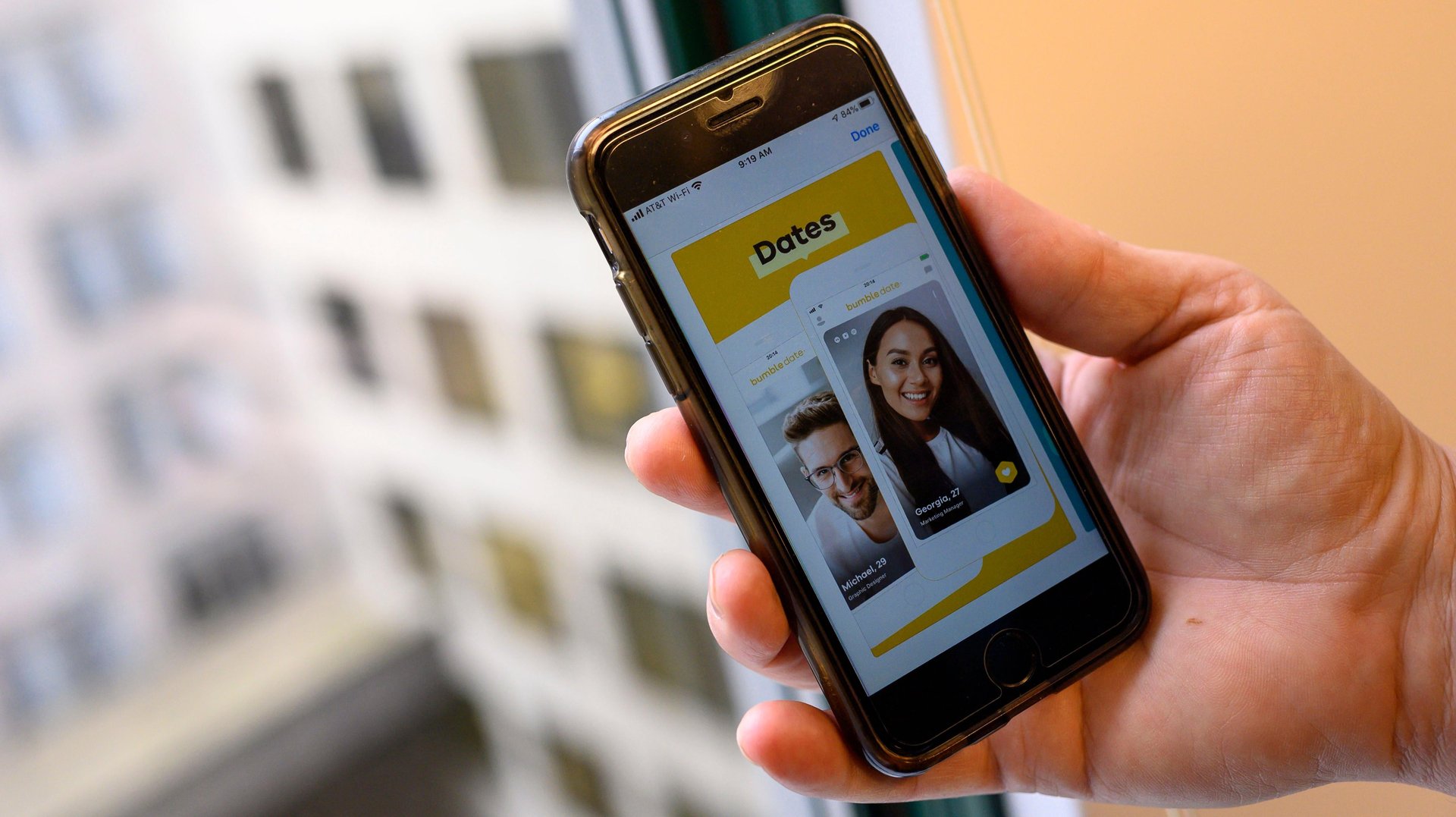A dating app subscription isn't actually a bad idea at a time of high inflation
Like Match, Bumble is set to report an uptick in paying users

At a time when the cost of living is through the roof, people are splurging on…dating apps?
People are volunteering to pay upwards of $20, sometimes $30, a month to sift and swipe to find love online. Just look at Match Group’s recent earnings results: The company clocked a 1% year-over-year rise in revenue to $810 million, beating analyst expectations pegged at $793 million, according to Refinitiv data. In the quarter ending Sept. 30, 2022—one of heightened economic turmoil—Match added 100,000 more paying users to its products compared to the prior quarter, bringing the total to 16.5 million.
Tinder, which accounts for the lion’s share of Match’s 100 million active users, posted a 6% growth in revenue and 7% increase in paying users.
Match’s sprawling dating and matrimony universe has 45 brands including the likes of Hinge and OkCupid, which makes it a solid indicator of industry trends in itself. But even outside of the Match world, players are on track to affirm this trend.
When Bumble, which is unique in that it only allows women to chat first in heterosexual matches, reports earnings tomorrow (Nov. 9), it “is expected to post a rise in third-quarter revenue driven by a surge in paying users on its dating apps,” according to Refinitiv.
The apps, which weathered the pandemic just fine, don’t seem to be shaken by economic woes either.
Charted: A steady climb for dating app revenue over the years
Why are people paying for dating apps?
Looking for love doesn’t exactly qualify as an essential item. But shelling out a few hundred dollars over a year to find your other half who could help halve your expenses? Sounds almost lucrative. It might not be the only reason to date, but it could be a factor enthusing swipers to find their match.
The long-term savings seem like a big draw to pay for premium subscriptions in the short-term. After all, if looking through curated lists of likers, getting back missed matches, and having unlimited people to connect with, leads to a partner—specifically, someone to move in with.
Renting in New York City, one of the most expensive cities in the world, has gotten even more expensive in recent months. What’s $360 a year for a dating app subscription if it could lead to a 50% monthly discount on a 1-bedroom $3,800 flat?
Finding a soulmate, a sort of roommate with benefits, can help save on other costs too—especially gas, utilities, and inflation-driven groceries.
P.s. Cheers to singles in the city that never sleeps finding someone on dating apps, with more expensive beer.
Dating apps aren’t immune to the economic downturn
Despite Match’s growth, it’s not all smooth-sailing. Macroeconomic conditions hit the group’s more traditional brand Plenty of Fish, which serves consumers with less discretionary income, and on the more discretionary à la carte spending—especially among its younger demographic on Tinder—the company said in its shareholder letter.
It’s cognizant that a “challenging operating environment” persists. The group said it would control costs via reductions in headcount-related expenses (i.e. job cuts) and marketing budget.
“Investors will also look for comments on how the company is planning to tackle the economic slowdown,” the Refinitiv newsletter said about Bumble.